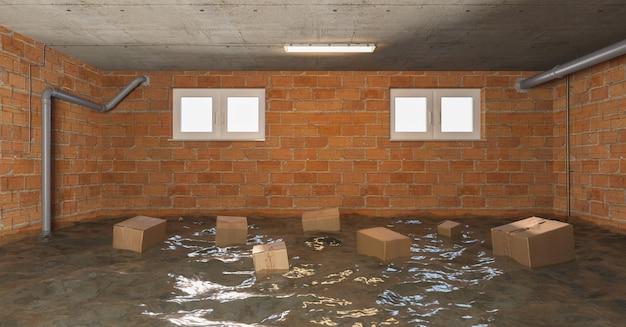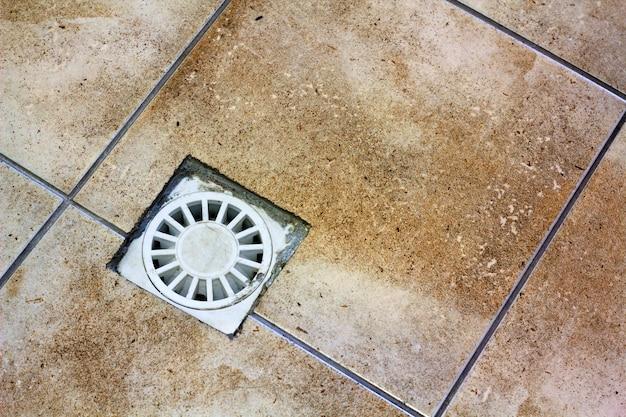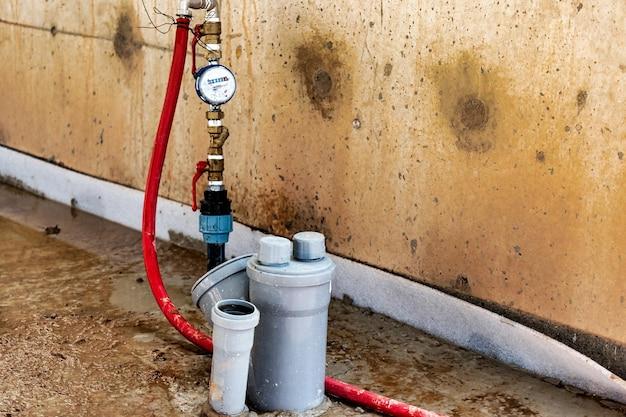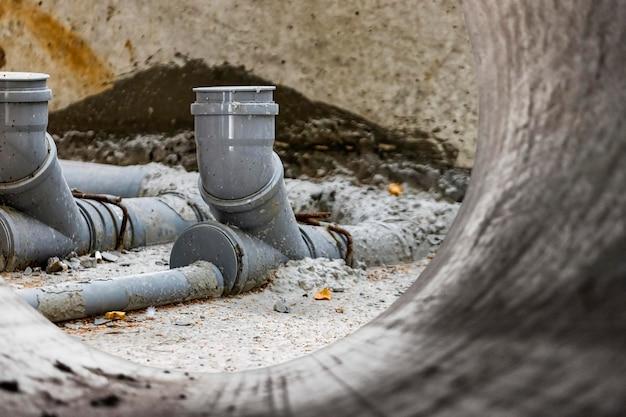Are you facing the frustrating problem of basement floor drain backup? Do you often worry about the potential costs and damages caused by sewage backup in your basement? If you’ve experienced any of these issues or have concerns regarding basement floor drain backup, you’re in the right place.
In this comprehensive blog post, we’ll cover everything you need to know about dealing with backup in your basement floor drain. We’ll explore the common causes of basement floor drain backup and provide you with some potential solutions to help you tackle this pesky problem once and for all.
We’ll also discuss the common symptoms of basement floor drain backup, such as backups when washing clothes, flushing toilet, or water coming up through the basement floor drain after heavy rain. Additionally, we’ll address the potential costs of dealing with sewage backup in your basement and how to protect your home from future occurrences.
By the end of this guide, you’ll be equipped with the essential knowledge and tools needed to tackle this annoying problem and take steps to prevent it from happening again. So, let’s dive in and learn how to handle backup in basement floor drain once and for all.
Backup in Basement Floor Drain
Are you experiencing backups in your basement floor drain? This is a common problem, especially for homes with a basement. It can be caused by several factors, such as clogs, lack of regular cleaning, and damaged pipes. Here are some tips on how to prevent backups in your basement floor drain.
Clean the Drain Regularly
One of the main causes of backups in the basement floor drain is the accumulation of debris and dirt in the drain. Regular cleaning of the drain can go a long way in preventing backups. Start by removing the cover of the drain and using a plunger to dislodge any debris or buildup. Then, use a drain snake to remove any clogs that may be present.
Install a Backwater Valve
A backwater valve is a device that prevents sewage or wastewater from flowing back into your home. This device is installed in the basement floor drain to prevent backups due to sewage flooding. The valve is designed to automatically close when the sewage water level rises, preventing it from flowing back into your home. Ensure that the backwater valve is installed by a professional plumber to ensure that it works effectively.
Avoid Flushing Non-Biodegradable Items
Many homeowners mistakenly flush non-biodegradable items such as baby wipes, grease, and hair down the drain. These items can accumulate over time, leading to clogs and eventually backups. Dispose of non-biodegradable items in the trash and not down the drain to prevent backups in your basement floor drain.
Professional Inspection and Maintenance
Regular maintenance and inspections by a professional plumber are essential to keep your drainage system functioning correctly. A professional plumber can identify issues in your drainage system and provide timely repairs before they cause significant damage. They can also perform regular cleaning and maintenance, ensuring that your drainage system is free from debris and clogs.
In conclusion, backups in the basement floor drain can be inconvenient and messy to deal with. However, by implementing the tips above, you can prevent backups and maintain an efficient drainage system. Remember, prevention is always better than cure, so ensure that you regularly clean your drain, dispose of non-biodegradable items correctly, install a backwater valve, and seek professional plumbing services for regular maintenance and inspections.
Sewage Backup in Basement Cost
If you have ever experienced sewage backup in your basement, then you don’t need anyone to tell you how messy and unpleasant it can be. Not only does it make your home unlivable, but it also poses health hazards to you and your family. But beyond the inconvenience and health risks, sewage backups in basements can also cost you a lot of money.
Cleanup Costs
The first and most immediate cost that comes with sewage backup in the basement is the cost of cleanup. Depending on the extent of the damage, you may need to hire a professional cleaning service to help remove the sewage and disinfect the affected areas. The cost of hiring a professional cleaning service can range from a few hundred to several thousand dollars, depending on the severity of the sewage backup and the amount of work required.
Repair Costs
After cleaning up the sewage, you may also need to repair or replace damaged items in the basement, such as flooring, walls, furniture, and appliances. The cost of repairs will depend on the extent of the damage and the type of materials used for repair or replacement. In some cases, you may need to hire a contractor to help with the repairs, which can increase the cost significantly.
Insurance Coverage
If you have homeowners’ insurance, your policy may cover the cost of sewage backup cleanup and repairs, depending on the cause of the backup and the extent of the damage. However, it’s important to note that not all insurance policies cover sewage backups, and some policies may exclude coverage for damages caused by floods and water backups.
Prevention and Maintenance Costs
The best way to avoid the high cost of sewage backup cleanup and repairs is to prevent the backups from happening in the first place. Here are some preventive measures you can take:
- Regularly inspect and maintain your sewage system, pipes, and drains
- Don’t flush anything other than toilet paper and human waste down your toilet
- Properly dispose of grease, oil, and food waste in the trash
- Install a backwater valve to prevent sewage backups during heavy rains
- Avoid planting trees and shrubs near your sewage system

Preventing sewage backups may involve some upfront costs, such as installing a backwater valve or hiring a professional to inspect your sewage system. However, these costs are minimal compared to the high cost of cleanup and repairs following a sewage backup.
In conclusion, sewage backups in basements can be costly both in terms of immediate cleanup and repair costs as well as long-term health hazards and inconvenience. However, by taking preventive measures and investing in regular maintenance, you can minimize the risk and cost of sewage backups in your basement.
How to Unclog a Basement Floor Drain
If you are dealing with a clogged basement floor drain, don’t panic. There are several ways to unclog it without calling in a professional plumber. Here are some simple steps to help you clear the drain.
Step 1: Remove the Drain Cover
Start by removing the drain cover using a screwdriver or pliers. This will give you access to the drain pipe and allow you to remove any debris that may be blocking the drain.
Step 2: Use a Plunger
Plunging the drain may be an effective way to clear the blockage. Fill the basin with enough water to cover the plunger. Place the plunger over the drain, and push and pull the plunger to create suction. Keep doing this repeatedly until the water begins to drain.
Step 3: Use a Plumbing Snake
If plunging doesn’t work, try using a plumbing snake. Insert the snake into the drain until you feel the obstruction. Rotate the snake clockwise with steady pressure until the blockage is cleared.
Step 4: Use Baking Soda and Vinegar
Baking soda and vinegar can act as a powerful and natural DIY drain cleaner. Pour 1/2 cup of baking soda down the drain, followed by 1/2 cup of vinegar. Let the mixture sit for a few hours, then flush the drain with hot water.
Step 5: Use a Chemical Drain Cleaner
If none of the above methods work, you can use a chemical drain cleaner. These cleaners can be found at your local hardware store, and they are designed to dissolve tough clogs quickly. Follow the instructions on the label, and be sure to wear protective gloves and goggles.
In conclusion, unclogging a basement floor drain is a simple process that can be done quickly and easily. By following these steps and using these simple methods, you can save yourself time and money, and keep your basement dry and free from water damage.
Basement Drain Backing Up When Washing Clothes
One of the most common problems that homeowners face is a basement drain backing up when washing clothes. This can be a frustrating situation, especially if it happens frequently. There are a few reasons why your basement drain may be backing up when you do laundry.
Clogged Drain Pipes
One of the most common reasons for a basement drain backing up when washing clothes is a clogged drain pipe. This can happen if lint, dirt, soap scum, and other debris build up in the drain pipes over time. As a result, water from your washing machine can’t flow freely through the pipes, which causes it to back up into your basement drain.
Faulty Drain Traps
Another reason why your basement drain may be backing up when you do laundry is due to faulty drain traps. Drain traps are responsible for preventing sewer gases from entering your home. However, if the drain traps are damaged or broken, they can’t perform their function. As a result, sewer gases can escape into your home and cause your basement drain to back up.
Blocked Vent Pipes
Lastly, blocked vent pipes can also cause your basement drain to back up when washing clothes. Vent pipes are responsible for allowing air to flow through your drain pipes, which helps to maintain proper water pressure. However, if the vent pipes become blocked, water can’t flow freely through the drain pipes, which can cause it to back up into your basement drain.
In conclusion, a basement drain backing up when washing clothes can be a frustrating problem. However, by understanding the reasons why it’s happening, you can take the appropriate steps to fix it. If you suspect that your drain pipes, drain traps, or vent pipes are damaged or blocked, it’s best to call a professional plumber to assess the situation and provide a solution.
What Would Cause a Basement Floor Drain to Back Up
Basement floor drain backups can be a nightmare for homeowners. Not only can they lead to water damage, but they can also cause foul odors and potential health hazards. Here are some of the common causes of basement floor drain backups:
Blockages in the Drain
Blockages in the drain can lead to backups. These blockages can be caused by various debris such as dirt, hair, soap, or even foreign objects that are accidentally flushed down the drain. These blockages can cause a buildup of pressure, leading to sewage backups. Regular cleaning and maintenance can help prevent these blockages from occurring.
Tree Roots
Tree roots can grow into pipes and drains, causing blockages and damage. This can lead to backups and cause water damage to your basement. If you suspect that tree roots are causing the backup, it is essential to contact a plumber to fix the issue.
Sewer Line Problems
Sewer line problems can also cause basement floor drain backups. These problems can be caused by a build-up of sediment or a damaged sewer line. Regular maintenance of your sewer line can help prevent these issues from occurring.
Structural Issues
Structural issues such as foundation settling or shifting can cause basement floor drain backups. These issues can cause the pipes to become misaligned, leading to blockages and backups. If you suspect that structural issues are causing the backup, it is crucial to contact a professional to evaluate the situation.
In conclusion, basement floor drain backups can be caused by various issues. Regular cleaning and maintenance can help prevent these backups from occurring. It is essential to identify the cause of the backup and contact a professional to fix the issue as soon as possible to prevent further damage.
Basement Floor Drain Backs Up When Toilet is Flushed
If you notice that your basement floor drain backs up every time you flush the toilet, it’s a clear indicator of a plumbing problem that requires immediate attention. Several factors could be responsible for the backup, including clogs, obstructions, disconnections, or broken pipes. Here’s what you need to understand about basement floor drain backups and how to fix them:
Understanding the Causes of Basement Floor Drain Backups
Basement floor drain backups are quite common and usually occur when there’s a blockage within the main sewer line. When you flush the toilet, wastewater flows via the sewer line and, if there’s any obstruction, it causes the water to come back through the basement floor drain.
One of the significant culprits of basement floor drain backups is a clog or blockage in the main sewer line caused by items such as flushable wipes, feminine hygiene products, and other non-flushable items. These items obstruct the sewer line, causing an accumulation of wastewater that is forced to come back through the basement floor drain.
How to Fix the Problem
The first step to fixing a basement floor drain backup is to identify the underlying causes. You can start by cleaning any debris around the basement floor drain and checking if the backup persists. If the problem continues, consider calling a professional plumber to inspect and diagnose the source of the problem.
Once the plumber identifies the cause of the backup, they can take the necessary steps to fix it. They may clear out the clogs using specialized equipment like a drain snake or hydro-jet, inspect the sewer line for broken or disconnected pipes, or replace any damaged fixtures.
Preventing Future Basement Floor Drain Backups
The best way to prevent future basement floor drain backups is to be mindful of what you flush down the toilet. Avoid flushing non-flushable items like wipes, paper towels, feminine hygiene products, and other foreign objects that could clog the sewer line.
Regular maintenance of your plumbing system can also help prevent future backups by identifying and fixing any potential issues before they escalate. You can consider scheduling annual plumbing inspections to ensure your system is running smoothly.
In conclusion, a basement floor drain backup can be a frustrating plumbing issue, especially if it occurs every time you flush the toilet. Understanding the causes, identifying the source of the problem, and fixing it immediately can help prevent further damage to your plumbing system. With these tips, you can fix the issue and prevent future basement floor drain backups.
Water Coming Up Through Basement Floor Drain After Heavy Rain
Have you ever experienced water coming up through your basement floor drain after a heavy rain? It can be a frustrating and troublesome situation to deal with, especially if you’re unsure of what’s causing it. In this section, we’ll explore the possible reasons for this issue and what you can do to prevent it from happening.
Clogged Drain
One of the most common reasons for water coming up through the basement floor drain is a clogged drain. Over time, debris such as dirt, leaves, and hair can accumulate in the drain, causing it to become clogged. When this happens, water can’t flow through the drain properly, and it may start to back up into your basement.
To prevent this from happening, it’s essential to keep your basement floor drain clean by regularly removing any debris that may be present. You can use a plunger or a drain snake to help clear any clogs.
Sewer Backup
Another possible reason for water coming up through the basement floor drain is a sewer backup. Sewer backups can occur when there is a blockage in the sewer line, causing wastewater to backup into your home.
To prevent sewer backups from occurring, it’s important to avoid flushing items down the toilet that can clog the sewer line such as baby wipes, paper towels, and feminine products. Additionally, you can have your sewer line inspected and cleaned by a professional plumber to ensure that it’s in good condition.
Stormwater Flooding
Heavy rain can cause stormwater flooding, which can lead to water coming up through your basement floor drain. If your home is located in an area prone to flooding, it’s important to have a sump pump installed in your basement to help remove any excess water.
In addition to having a sump pump installed, you can also take steps to prevent stormwater from entering your basement by sealing any cracks in the foundation and ensuring that the grading around your home slopes away from the foundation.
Water coming up through your basement floor drain after heavy rain can be a frustrating and challenging issue to deal with. However, by understanding the possible causes, you can take steps to prevent it from happening in the future. Remember to keep your basement floor drain clean, avoid flushing items that can clog your sewer line, and take steps to prevent stormwater from entering your basement. By doing so, you can help ensure that your home stays dry and comfortable no matter how much it rains outside.


